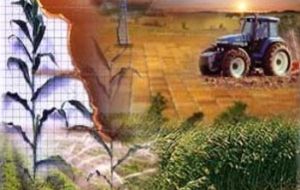MercoPress. South Atlantic News Agency
OECD/FAO anticipate promising future for farm-commodity prices
 Agricultural production needs to increase 60% in the next four decades
Agricultural production needs to increase 60% in the next four decades World farm commodity prices will edge higher in the next decade, and oilseeds are set to outperform wheat and other cereals, both trends fuelled by demand in emerging economies, the OECD said on Wednesday, presenting a joint report with the UN's food agency FAO.
Prices have eased from record highs hit in February last year and have stabilised as farmers boost output, but burgeoning demand for food, feed and fuel will keep prices firmly underpinned in coming years, the two bodies said.
“The trend is now on the upside,” OECD Secretary General Angel Gurria told a news conference in Rome. “That's due to scarcity of resources and land, more people on the planet and changing consumption patterns.”
In nominal terms, prices are set to rise over the next 10 years. Prices adjusted for inflation will remain flat or decline from current levels but are projected to average 10 to 30% above those of the previous decade, the report found.
High food prices at the start of last year helped fuel the Arab Spring uprisings in the Middle East and North Africa, but prices receded in the second half of 2011.
Food prices measured by the UN's Food and Agriculture Organisation (FAO) have fallen in the past three months but are expected to rebound in July following relentless dry weather, which has affected U.S. corn and soybean crops.
Gurria said in an interview that price spikes in soybean and corn markets over recent weeks would quickly lead to inflationary pressures, especially in poorer countries where food takes up a larger proportion of household spending.
The joint OECD-FAO Agricultural Outlook 2012-2021 report found that the risk of price spikes would increase in coming years.
“We expect prices will remain volatile as demand grows but stock levels fail to rise as much as in the past - that way any shortfalls will tend to have a higher impact on markets,” Merritt Cluff, FAO senior economist, said in an interview.
Weather-related yield variability and slower growth in production will also encourage volatility, FAO and OECD said.
Agricultural output growth is expected to slow to 1.7% per year over the next decade from more than 2% over the past several decades.
But the report warned that agricultural production needs to increase by 60% over the next 40 years to meet the rising demand for food.
Cluff said major sectors of growth in the next 10 years would be the livestock feed and vegetable oils markets as more people in developing countries consume meat and processed foods such as cookies and chocolate bars.
The trend will boost demand for oilseeds, while demand for wheat and other cereals is expected to be weaker.
“Higher income growth and urbanisation in emerging economies increases the tendency to buy value-added food products and get protein from meat, poultry and processed foods,” he said. “Protein from cereals will not see such demand in future.”
Prices for oilseeds are projected to increase in nominal terms by 9% over the decade, more than the rise anticipated for coarse grains and wheat, the report said.
High crude oil prices and bio-fuel mandates will also underpin oilseeds and vegetable oil prices. About 16% of global vegetable oil production should be used to produce bio-diesel by 2021.
Meanwhile, ethanol production is set to absorb 14% of global coarse grain production and 34% of sugarcane production by that date, the report said.
Gurria said bio-fuel policies would have a big impact on volatility levels of food commodity markets.
“Price spikes will have a lot to do with how much food is burnt for bio-fuel. That is going to have a serious bearing on the price of food going forward,” he said.
Sugar prices are seen staying at high levels, underpinned by low stocks, and further bouts of price surges are possible in response to unforeseen production shocks, the report said.
Meat prices are also set to remain on a high plateau during the next decade under persistently high production costs and more stringent food safety, environmental and animal welfare regulations.




Top Comments
Disclaimer & comment rulesCommenting for this story is now closed.
If you have a Facebook account, become a fan and comment on our Facebook Page!